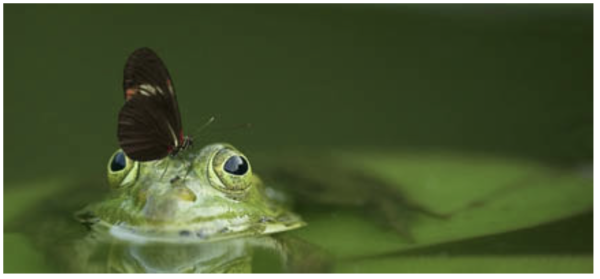
THE LIFE CYCLE OF A POND
Ponds are normally still water bodies, with or without plant life on the floor of the pond and containing fish and wildlife. It is desirable that they be no more than 15′ in depth, if you have a choice, so that sunlight can reach to the bottom and benefit the plant roots that thrive there. Ponds may be young or old, with different management needs. The goal of nature is to infill your pond, reduce the sides to shallow slopes and eventually turn it into a marsh or dry land. Ponds take management to remain a useful pleasure.
For discussion purposes, ponds can be sorted into 3 general categories of life – young, middle aged and elderly. All ponds move through these stages unless well maintained.
A young pond typically has steeper sides, little plant life and gravel, sand or rock bottoms. They have a low concentration of nutrients, nitrogen and phosphorus. By the way, fishing ponds don’t have to contain vegetative life if you provide pelleted feed for your fish on a regular basis, and some type of natural habitat near the shallow end (tree branches to 5′ in depth) for fry and fingerlings.
A middle aged pond has sides that are lessening in slope, and the bottom has begun to fill in with organic matter. Mud may be collecting on top of rocks. They generally have enough nutrients to allow plants and algae to thrive, and will be in need of management to slow down their growth. If the pond has previously been stocked and neglected, one species of fish may now be dominant. The fish may be skinny and stunted due to lack of proper food supply.
Elderly ponds have an abundance of aquatic plant life. The bottom is probably well filled with sediment and mud, and there is likely an abundance of nitrogen and phosphorous. The depth has continued to decrease, weeds have grown larger and the pond’s open areas of water are decreasing. Pond water clarity may be greatly reduced as well. This type of pond is in need of help, or it will continue to deteriorate.
Excess nitrogen and phosphorus causes algae to grow faster than the pond can handle. This can result in an algae bloom that is harmful to water quality. It decreases the oxygen that fish and aquatic life need to survive and can result in fish kill. Animal waste and rainwater runoff from surrounding ground fertilization can be a source of excess nitrogen and phosphorus.
If you allow livestock to drink from your pond they should be fenced out, to allow them a drinking area that won’t dry up, but not to be able to wade in. One cow’s daily excrement averages 50-65 lbs. This can significantly impact your pond to the negative. The other problem they create is muddying the water and breaking down the shore edge. Muddy water can reduce oxygenation and cause fish kill and in your pond.
To improve shallow sides allow the pond’s water level to drop and dry out for a few weeks. Then come in with machinery to deepen the sides and clear shoreline vegetation. If you are creating a pond or reworking yours, remove any top soil from the sides that will be covered with water. This prevents weed growth.
Add the right number of Carp to remove and then control excess weed growth.
Stock the right combination of fingerlings in their season to rejuvenate fishing. For example, stocking Bluegill and Minnow fingerlings in the Spring and then Bass fingerlings in the Summer or Fall allows your Bluegill to grow enough to not be instant feed for the Bass fingerlings. Bluegill can then start to repopulate and be a source of food for Bass as they grow.
Feed a high protein 1/8″ pelleted food on a daily basis to greatly increase your fish health and growth rate, which should make fishing a pleasure again.
Add an Aerator or Oxygen Diffuser to bring oxygen to the bottom of your pond, which should stop pond stink and make a much healthier habitat for your fish and the desirable aquatic plants.
Adding Lime is usually an important aspect of maintaining a pond due to acidity. Lime improves the ph level which is critical to healthy fish growth. We have an Article on it, but here is one with lots of explanation on why Lime benefits your pond:
https://www2.ca.uky.edu/wkrec/limingpondsaquaculture.htm
Adding Fertilizer can increase your pond’s fish yield greatly by increasing zooplankton and aquatic insect life, which increases natural fry, fingerling and fish food content in your pond. This is a good article about it, including a Fertilizing schedule:
http://fisheries.tamu.edu/files/2013/10/Fertilizing-Fish-Ponds.pdf
We hope that the Articles we provide will give you some good reading on the different aspects of pond management. Take the time to read each of them, and please feel free to call us if you are having problems with your pond. If we can’t help you we will refer you to Articles and Agencies that can.
Here is a good general article on pond construction and alterations:
http://www.aces.edu/pubs/docs/A/ANR-1114/index2.tmpl